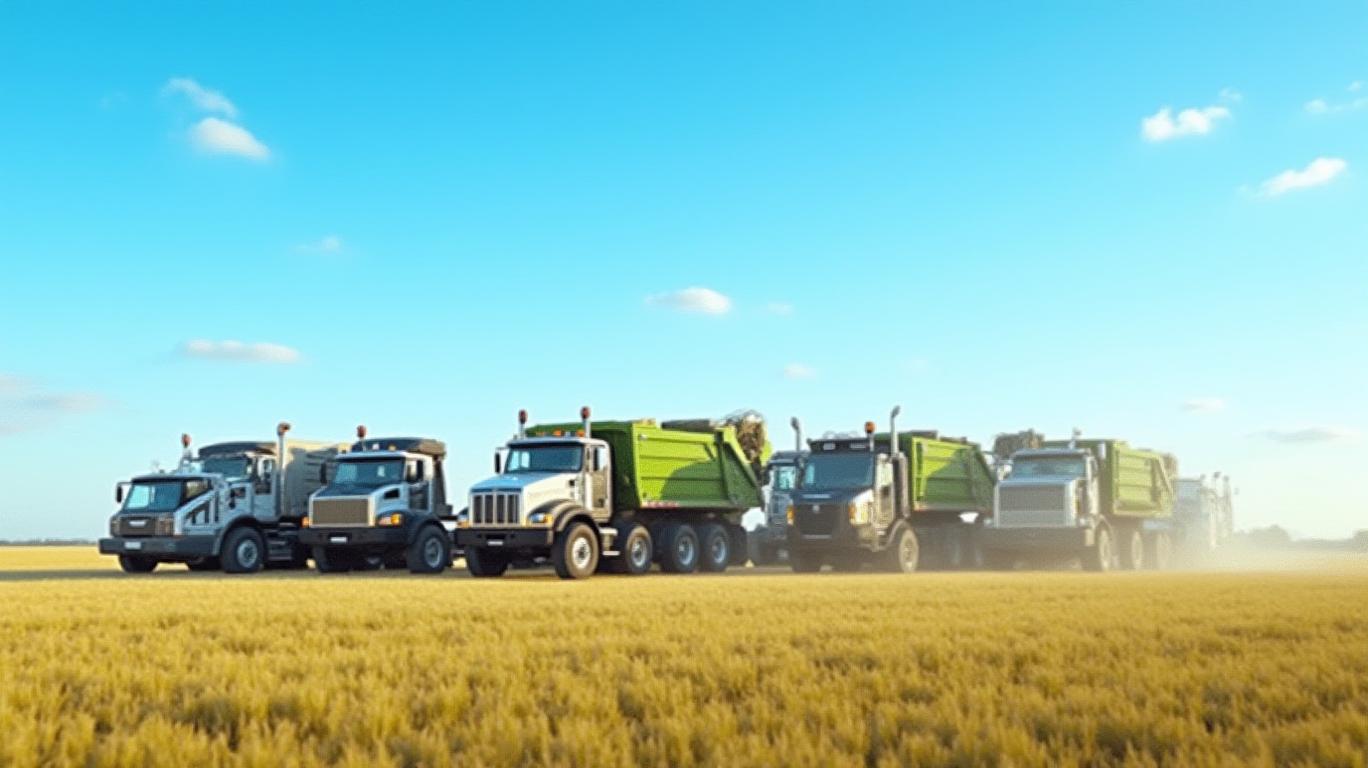Terex Corporation's Q1 Results: A Mixed Bag with Environmental Solutions Leading the Way
Terex Corporation’s first-quarter 2025 earnings underscored a challenging start to the year for its core businesses, but the company’s recent acquisition of the Environmental Solutions Group (ESG) proved to be a critical stabilizer. While revenue declined and profitability pressures mounted, the resilience of ESG and strong forward bookings suggest Terex is navigating market headwinds with a focus on long-term strategic priorities.

Revenue: Declines Across Core Segments, But ESG Shines
Total net sales for Q1 2025 fell to $1.229 billion, a 4.9% drop from the same period in 2024. The decline was largely driven by weakness in two key segments:
- Aerials, which include aerial work platforms, saw sales plummet 27.8% to $450 million, as customers delayed equipment replacements.
- Materials Processing (MP) revenue dropped 26.5% to $382 million, reflecting softer global demand and inventory adjustments by distributors.
The Environmental Solutions (ES) segment, however, delivered a 10.5% pro forma revenue increase to $399 million, now accounting for one-third of Terex’s total sales. Growth was fueled by strong demand for refuse collection vehicles and waste management equipment, offsetting declines elsewhere.
Profitability Under Pressure, But Cost Discipline Holds Ground
The earnings report painted a stark picture of margin erosion. GAAP net income collapsed to $21 million, or $0.31 per share, compared to $109 million, or $1.60 per share, in Q1 2024. Adjusted net income, which excluded one-time costs like litigation expenses and tariffs, was $55 million ($0.83 per share), down from $118 million ($1.74) in 2024.
The GAAP operating margin fell to 5.6%, down sharply from 12.2% a year earlier, as lower sales volumes and production inefficiencies took a toll. However, the adjusted operating margin held at 9.1%, a testament to cost controls. Notably, ESG’s adjusted margin improved to 19.4%, up from 10.1% in Q1 2024, highlighting its operational efficiency.
Operational Bright Spots and Forward Momentum
Despite the top-line struggles, Terex’s bookings data offers hope. Total bookings rose 5.3% sequentially to $1.5 billion, with a robust book-to-bill ratio of 124%—a sign of strong demand ahead. The Aerials segment led with a 144% book-to-bill ratio, suggesting delayed orders could reaccelerate in coming quarters.
CEO Simon Meester emphasized that 75% of U.S. equipment sales in 2025 will be domestically produced, a strategy to insulate the company from tariffs and supply chain disruptions. This shift, combined with ESG’s momentum, appears to be a key pillar of Terex’s resilience.
Outlook: Navigating the Storm
Terex reaffirmed its full-year adjusted EPS guidance of $4.70–$5.10, despite projecting an 8–12% organic sales decline for 2025. Management cited sequential improvements in MP and Aerials starting in Q2, along with ESG’s continued strength, as reasons for confidence.
The balance sheet remains healthy, with $1.1 billion in liquidity and a solid 15.0% return on invested capital, exceeding the company’s cost of capital. Capital allocation remains disciplined, with $43 million returned to shareholders via dividends and buybacks.
Risks on the Horizon
Geopolitical tensions and tariffs remain a wildcard. While domestic production will mitigate some tariff risks, Terex’s exposure to global markets—particularly in MP and Aerials—could leave it vulnerable to macroeconomic slowdowns. Additionally, the delayed recovery in MP and Aerials could stretch beyond expectations if demand remains sluggish.
Conclusion: A Company in Transition
Terex’s Q1 results are a reminder that industrial companies are grappling with shifting demand cycles and geopolitical headwinds. While the legacy segments face near-term challenges, ESG’s rapid growth and strong margins position it as a linchpin for future performance. The company’s reaffirmed guidance and healthy balance sheet suggest management has a clear path to navigate these challenges.
Investors should monitor Aerials’ order backlog conversion and MP’s recovery trajectory closely. With a book-to-bill ratio above 100% and ESG’s 19.4% adjusted margin, Terex’s fundamentals remain intact. However, the stock’s valuation—trading at ~10x the midpoint of its 2025 EPS guidance—is reasonable, but buyers must be patient for the turnaround to materialize.
In a sector where cyclicality is king, Terex’s story is far from over. The question now is whether its strategic bets on ESG and domestic manufacturing can transform short-term pain into long-term gain.










